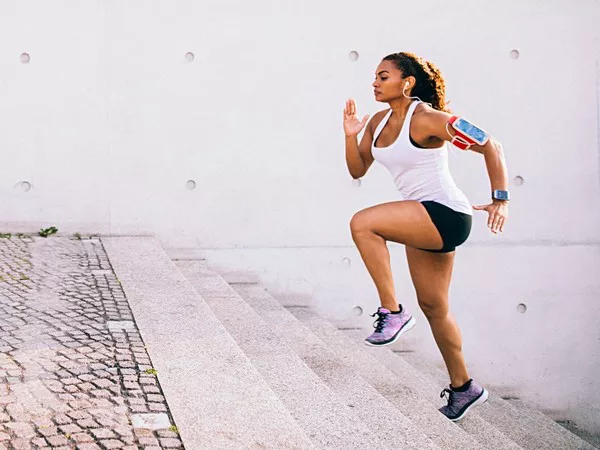As men reach the milestone age of 50, they face unique physical challenges. Muscle mass declines, metabolism slows, joint flexibility decreases, and testosterone levels drop. These changes impact energy, daily function, and overall well-being.
However, with the right exercise regimen, men over 50 can improve strength, enhance flexibility, and boost quality of life. The key lies in choosing workouts that both accommodate the body’s changing needs and provide an effective challenge.
Functional Fitness Is Key After 50
“Functional exercise becomes critical with age. My top advice for men over 50 is to stay active and engage in regular strength training several times a week. Like a car, our bodies need to be properly warmed up as we get older,” says Nico Gonzalez, a certified personal trainer and global fitness educator with ACE and NCPT Pilates credentials.
Comprehensive Fitness Strategy for Men Over 50
This article features expert insights from Nico Gonzalez and Tyler Read, founder of PTPioneer and certified personal trainer. According to them, a well-rounded fitness plan after 50 should focus on building strength, maintaining flexibility, improving balance, and protecting joint health — all while minimizing injury risk.
Paired with proper nutrition and sufficient recovery, these exercises can be powerful tools against aging. Read emphasizes, “Before starting any new routine, it’s wise to consult certified fitness or medical professionals to ensure exercises suit your age and health status. If you experience any pain, stop immediately and seek expert advice.”
Below are 12 top exercises recommended for men over 50, advised to be performed one to two times weekly, with 3 sets of 8 to 12 repetitions each.
1. Glute Bridge
Coach Gonzalez highlights that the glute bridge is an excellent exercise targeting the glutes, hamstrings, and core muscles, helping to improve spinal stability. By lying on the back with knees bent and feet flat on the floor, this exercise activates the deep abdominal muscles, boosting body support.
This movement not only strengthens the lower back but also improves hip mobility, which is crucial for preventing lower back pain and maintaining good posture. Regular practice leads to noticeable gains in strength and flexibility.
2. BOSU Dead Bug Standing
The BOSU dead bug is ideal for training core stability and coordination. Using a BOSU balance trainer, the exerciser keeps the lower back pressed to the device while moving opposite arms and legs in a controlled pattern, effectively strengthening the deep core muscles.
This exercise enhances balance and neuromuscular control, helping reduce the risk of falls. For men over 50, a strong core is essential to maintain overall body function and athletic performance.
3. Core Leg Side Lifts
Performed in a seated position, core leg side lifts require supporting the body with the hands while raising the legs side to side. This challenges the rectus abdominis, obliques, and hip flexors, encouraging coordinated engagement between the abdomen and lower limbs.
Beyond boosting core strength, this exercise builds endurance in the arms and glutes. Consistent training improves body stability, supporting daily physical activities and functional strength.
4. Twisting Knee Hover
This full-body exercise involves kneeling, lifting the knees off the ground, and twisting the hips. Adding arm lifts increases balance and coordination challenges. It targets the chest, shoulders, and deep core muscles.
Not only does it improve upper body strength, but it also enhances spinal mobility and core stability—especially beneficial for middle-aged and older men looking to maintain posture control.
5. Squats
Squats are one of the most fundamental and effective lower body strength exercises, suitable for almost everyone. Whether using bodyweight, kettlebell goblet squats, or barbell squats, it’s crucial to maintain proper knee-to-toe alignment and an upright back to prevent forward leaning.
Squats work the quadriceps, glutes, and hamstrings while strengthening the knee and ankle joints. Regular practice significantly enhances everyday movement capacity and reduces fall risk.
6. Pull-Ups
Pull-ups are a key exercise for building upper body strength and shoulder mobility. Different grips target various muscle groups, and weighted pull-ups assist those who cannot yet lift their full body weight.
Maintaining shoulder range of motion is essential to preserving functional movements, and pull-ups strengthen the back muscles to improve posture and relieve neck and shoulder tension.
7. Push-Ups
Push-ups combine chest, shoulder, and core muscle training. Keeping the core tight prevents hip sagging, making this a highly effective compound exercise for overall strength.
Adjusting hand placement can modify difficulty, allowing personalization based on individual fitness levels. This makes push-ups versatile and accessible for a broad range of men.
8. Deadlifts
Deadlifts are a powerful compound exercise targeting the lower back, glutes, and major leg muscles. Conventional deadlifts emphasize the quadriceps, while Romanian deadlifts focus more on the hamstrings and glutes.
Using dumbbells or kettlebells allows flexibility in resistance and is ideal for different fitness levels. Proper form is critical to avoid injury and maximize benefits.
9. Overhead Press
The overhead press helps maintain shoulder and upper limb strength, supporting daily activities such as reaching and lifting objects. This can be performed with a barbell, dumbbells, or kettlebells.
Avoid shrugging the shoulders during the lift and ensure full extension at the top for maximum shoulder stability and strength development.
10. Rows
Rowing exercises target the back and biceps through horizontal pulling movements. Whether doing single-arm dumbbell rows or barbell rows, focus on scapular retraction and relaxed shoulders for optimal muscle engagement.
Effective rowing improves back thickness and strength while relieving tension caused by prolonged sitting, helping to counteract postural imbalances.
11. Lunges
Lunges mimic natural gait patterns and provide functional strength training for the lower limbs while improving balance and coordination. Dumbbells, kettlebells, or barbells can add resistance to increase difficulty.
This movement is particularly helpful in maintaining mobility and stability, which reduces fall risk and enhances overall physical performance.
12. Standing Rotations
Rotational core exercises are vital for spinal health and strengthening the core muscles. Cable rotations, Russian twists, or resistance band rotations are recommended variations.
Maintain a neutral spine and avoid rounding the back. Initiate rotation from the hips and torso to improve functional movement and lower injury risk.
After 50, combining science-based training with expert guidance enables men to counteract some effects of aging, stay healthy, and embrace new stages of life with energy and confidence.
Related Topics































